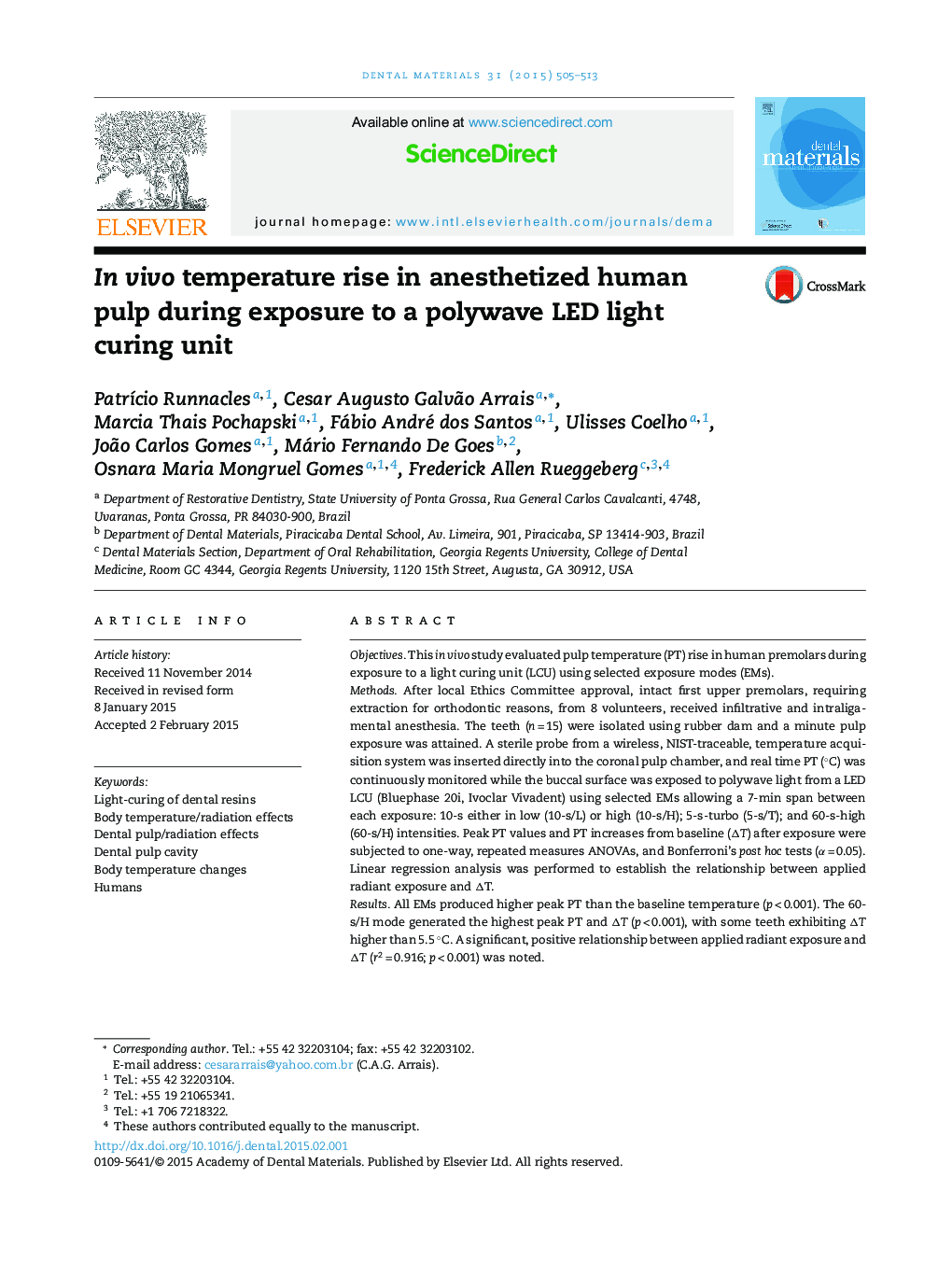| کد مقاله | کد نشریه | سال انتشار | مقاله انگلیسی | نسخه تمام متن |
|---|---|---|---|---|
| 1420676 | 986379 | 2015 | 9 صفحه PDF | دانلود رایگان |
• Accurate real-time, in vivo pulp temperature rise was measured in intact human first premolars.
• Exposure to LED light at different exposure modes resulted in pulp temperature rise.
• Positive relationship between radiant exposure and pulp temperature was noted.
ObjectivesThis in vivo study evaluated pulp temperature (PT) rise in human premolars during exposure to a light curing unit (LCU) using selected exposure modes (EMs).MethodsAfter local Ethics Committee approval, intact first upper premolars, requiring extraction for orthodontic reasons, from 8 volunteers, received infiltrative and intraligamental anesthesia. The teeth (n = 15) were isolated using rubber dam and a minute pulp exposure was attained. A sterile probe from a wireless, NIST-traceable, temperature acquisition system was inserted directly into the coronal pulp chamber, and real time PT (°C) was continuously monitored while the buccal surface was exposed to polywave light from a LED LCU (Bluephase 20i, Ivoclar Vivadent) using selected EMs allowing a 7-min span between each exposure: 10-s either in low (10-s/L) or high (10-s/H); 5-s-turbo (5-s/T); and 60-s-high (60-s/H) intensities. Peak PT values and PT increases from baseline (ΔT) after exposure were subjected to one-way, repeated measures ANOVAs, and Bonferroni's post hoc tests (α = 0.05). Linear regression analysis was performed to establish the relationship between applied radiant exposure and ΔT.ResultsAll EMs produced higher peak PT than the baseline temperature (p < 0.001). The 60-s/H mode generated the highest peak PT and ΔT (p < 0.001), with some teeth exhibiting ΔT higher than 5.5 °C. A significant, positive relationship between applied radiant exposure and ΔT (r2 = 0.916; p < 0.001) was noted.SignificanceExposing intact, in vivo anesthetized human upper premolars to a polywave LED LCU increases PT, and depending on EM and the tooth, PT increase can be higher than the critical ΔT, thought to be associated with pulpal necrosis.
Journal: Dental Materials - Volume 31, Issue 5, May 2015, Pages 505–513
